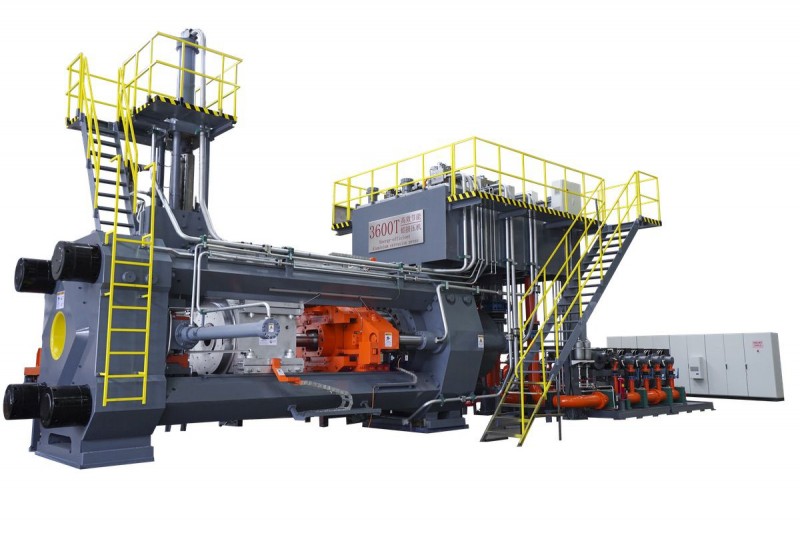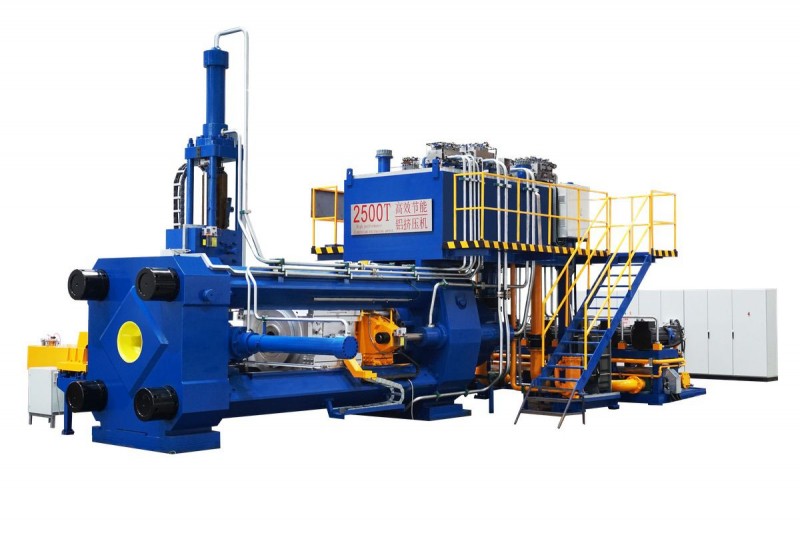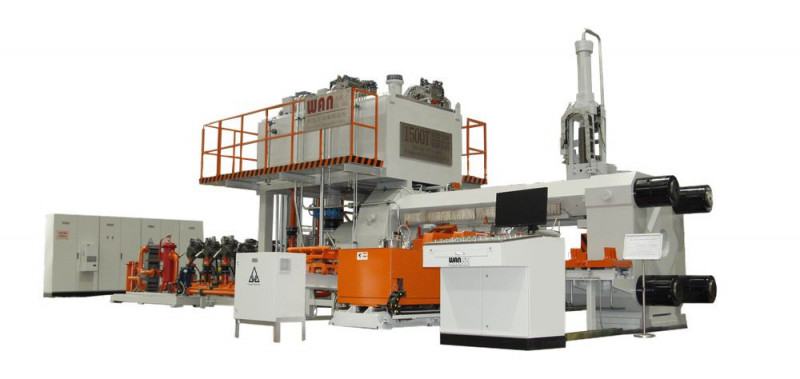Aluminum is one of the most popular and widely used metals in the global manufacturing and construction industries. There are a variety of reasons behind its widespread use, including such qualities as its lightweight, corrosion resistance, electrical conductivity, thermal conductivity, durability, aesthetic appeal, and more.
One of the most common forms of aluminum used in various applications is known as extruded aluminum. Aluminum extrusion is the process through which we create the various profiles and shapes we require.
The process involves first heating the aluminum until it is pliable before forcing it through a specifically shaped opening within a die to produce a desired cross-sectional profile. After this, the aluminum will be cooled so that it solidifies in its new form.
Manufacturers can calibrate and modify the size and shape of the die according to the client’s needs, ranging from the simplest bars and tubes to highly complex designs. Because of the various applications we use extruded aluminum for, we need to be sure that we get the highest-quality and useful products available.
To help us achieve this objective, this post will highlight some of the most effective design best practices applicable to the aluminum extrusion process. Let’s dive right in.

One of the most effective ways of making extrusions easier to work with and thus more useful is through the addition of index marks on the inside and outside surfaces of the extrusion. The addition of these marks to the profile of the final product makes it much easier for the machinists responsible for any required punching, drilling, or assembly to do their jobs.
The usefulness of any manufactured product or tool will always be influenced by how easy it is for the final user to handle.
In certain scenarios, die corners have been known to puncture or break extrusions during the production process. This is especially common in situations where the extrusion is void or hollow and has a relatively thin profile.
The best way to avoid this danger, which is caused by the torque produced during the production process, is to avoid designing the extrusion with sharp or angled corners. Rounded corners are the ideal approach in this situation.
If you need to produce a hollow extrusion, your biggest concern will be the strength of your final product and its resistance to bending. The most effective way to strengthen thin hollow extrusions is by including web designs within them that are set up to support each wall of the final product.
Webs allow you to produce extrusions much easier than gap and angle dimensions, which typically result in much longer hollows. Grooves are also a great way to mitigate the downsides of hollow extrudes.
These grooves are set up to run along the length of the extrusion, breaking up the smooth surfaces of these planes. The benefit of doing this is that when the extrusion is placed under pressure, it will be much more difficult to bend or crumple since some of the energy will be forced to act against surfaces that are directly perpendicular to their direction.
To get a clearer picture of this, imagine trying to bend or break a standard ruler lengthwise and then imagine trying the same but edgewise. It’s much harder to break a long object when you apply the force along the edged pane.
Wherever you have junctions in your extrusions, you should always choose rounded, smooth junctions rather than sharp angles. The idea behind this is that rounded edges with a generous radius offer much more durability by spreading out any potential vulnerabilities. This is the same logic behind why spheres and rounded objects can withstand much greater pressure than angled objects.
Avoid knife edges wherever possible by introducing generous tapers and rounding out any sharp corners. If a sharp corner is completely unavoidable, consider using a corner relief. Another initiative you can take is to strive to keep the angles of all inside corners below 0.15 inches.
As you prepare to place your order (if you’re a client), an effective way to ensure great results will be to keep the surface finish you want in mind right from the beginning. The best way to alert the supplier to your needs is to include this detail in your preliminary drawings.
By doing this, you’ll give the producer the chance to pay extra attention to any areas that will require special handling to ensure that the finish can be applied effectively, whether this care will need to take place during the extrusion or post-extrusion processes.
With thoughtful preliminary design, you can minimize the chances of potential unwanted markings on your finished product by limiting any changes in metal thickness, which often show up in the form of marks on the opposite surface of the extrusion’s finish.
It is much more convenient and effective to generate the desired tolerances required for your needs when measuring your dimensions across solid aluminum surfaces than you can when making your measurements using a hole center or center line.
Open space dimensions are significantly more difficult to produce than close tolerance standards because it’s relatively difficult to accurately measure their limits during the extrusion process of an extruder. Solid metal dimensions are much more convenient to work with and so produce much more consistent and reliable results.
When you calibrate different wall thicknesses between different segments of an extrusion, you run the risk of introducing dimensional control problems during the extrusion process. To achieve the most efficient extrusion project possible, the ratio of thickness between adjacent walls should never exceed a 2 to 1-ratio.
The best results are always achieved through the use of a uniform wall thickness. In case your design perimeters call for the combination of a thin and thick wall combination, your best course of action will be to incorporate a streamlined radius in all the segments where the thickness changes abruptly (use a curve rather than a sharp angle wherever possible).
Aside from the risk of horizontal or vertical pressure bearing on your extrusion and potentially causing damage to it, there’s another risk to the integrity of your product - twisting. Twisting occurs when an object is twisted clockwise at one end while the other remains stable or goes counter-clockwise on the other.
With sufficient force, this results in shearing and the eventual tearing of the object. This is a particular danger when it comes to hollow extrusions with thin, wide frames.
If you cannot use internal webs to bolster the strength of the final product for some design reason, then ribs might be the most viable solution. Like bridges, which we’ve highlighted above, ribs also run along the long edges of an extrusion.
The difference here is that instead of bending the aluminum, ribs add an extra layer of metal to the extrusion surface and strengthen it that way. It’s much harder to twist or bend the final product with the addition of ribs.
Asymmetrical details refer to de3sign details that do not match on a horizontal plane, a vertical plane, or either. The danger that comes with such designs is that they significantly increase the chances of die tongue breaks during the extrusion process.
If it’s not possible to eliminate the chances of this happening, the best practice is to try, and keep the outside corners of any asymmetrical components to a minimum of 0.20 inches.
There are various types of extrusions you can design, and they all come with their specific handling requirements and problems. As you navigate your way through the design process, you need to keep in mind various factors such as the end-use purpose, production costs, product quality, and so on.
Different circumstances will always require different design specifications, so be sure to consult your supplier before finalizing your design parameters. Here’s a quick look at the most common extrusion categories:
• Solid Shapes: This refers to any extrusions that do not have any hollows or voids in their profiles, including compact cross-sections, whether they have projections or not.
• Semi-Hollow Shapes: These are shapes that only partially enclose hollows or voids. An example of such shapes might be rectangles or circles with gaps on one of their sides, although a solid shape might also possess a partially enclosed hollow on one of its sides, even though the difference between the two might not be easily discernible.
• Hollow Shapes: Simply stated, hollow extrusions are shapes that entirely comprise complete hollows or voids within their cross-sections. The hollows may be of any shape you desire, and the extrusion itself may also be of any shape.
Solid and semi-hollow shapes are relatively straightforward to work with, which is why most people seek out creative solutions when working with hollow extrusions. This is why it’s important to understand the types of extrusion available during the design process. Hollow shapes fall into three general categories, as follows:
• Seamless Tube Hollows: These tubes are produced by piercing the billet before the extrusion process begins so that the mandrel (piercer) serves as the tube’s inner diameter. The technique doesn’t utilize any welds, and because of its seamless nature, these extrusions are capable of withstanding extremely high pressures. Due to these qualities, such products are best used for square or round profiles.
• Porthole Die Hollows: These are the most commonly used and economical designs where the objective is to produce hollow shapes. The shapes in this category are typically ranked through three difficulties, namely Class I, Class II, and Class III. The system utilizes a two-part assembly that will first divide the ingot of aluminum being processed before ‘welding’ the two back together afterward as it moves through the die passages and the exit orifice. Extrusions produced through this method are considered hybrid products with invisible metallurgical seams. While these hollows are highly useful, they are not recommended for use in high-pressure scenarios.
• Bridge Die Hollows: These are relatively similar to porthole die hollows, with the exception being that the die designs are not the same. Here, bridge dies hold up the mandrels that serve to provide the extrusion shapes. After each billet has been extruded, the die will be stripped completely clean again. This differs drastically from porthole die processes, where the internal mandrel allows for continuous billets and uninterrupted extrusions.
Aluminum extrusion plays a critical role in today’s world, as the number of applications it is used worldwide is virtually limitless. Whichever type of extrusion you require, you’ll need to pay close attention to various factors and aspects of your operation. Whatever your project is, one of the best things you can do as a client hoping to order quality aluminum extrusion products is to formulate a comprehensive list of specifications. This list should include the following elements:
• A drawing or print of what you hope the end product will look like.
• What do you intend to use the product for in the end?
• The temper or alloy you think will fit your needs.
• The quality of the specifications you require.
• Your desired purchase or end-use length.
• Your tolerance specifications.
• The assembly and fit of your product.
• Any exposed surfaces or surface finishes you will require secondary fabrication needs you might have.
• The quantities you require and whether or not you want repeat deliveries.
• Your packaging, handling, and shipping details.
• Specifics regarding when you will need the finished product, prototype production dates, and sample needs.
Whatever your order request will end up looking like, it will be important that you only utilize the highest quality products. Wangeshi has decades of experience providing aluminum extruder machines to clients all over the world. For all your aluminum extrusion needs, contact Wangeshi for high-quality, cost-effective, and long-lasting products.


